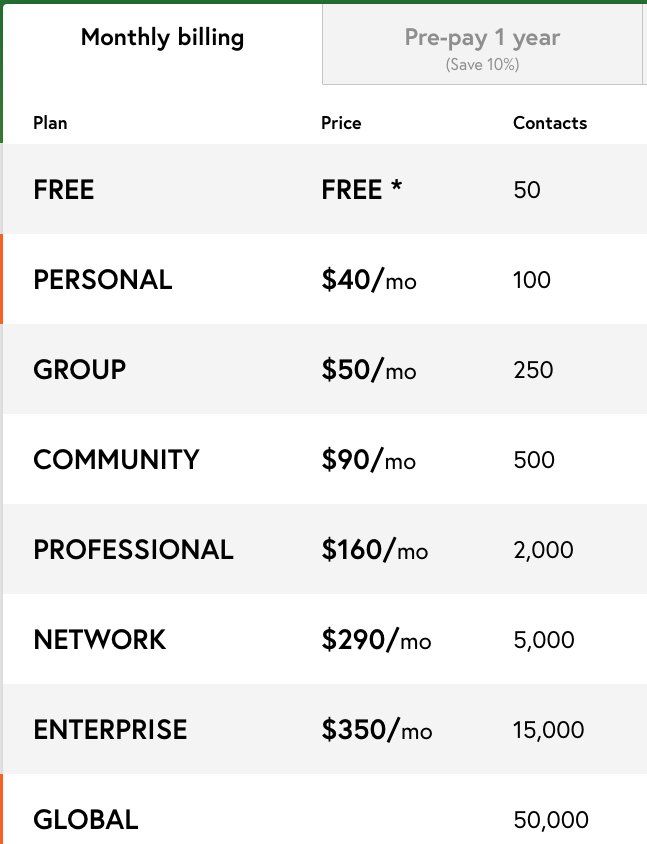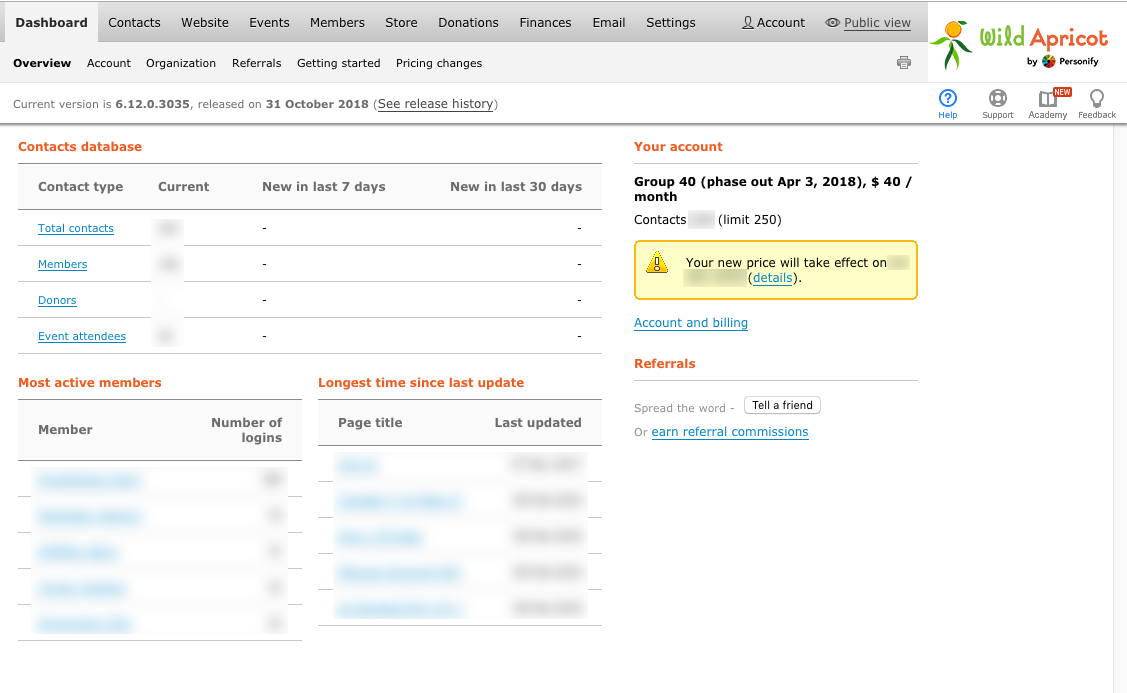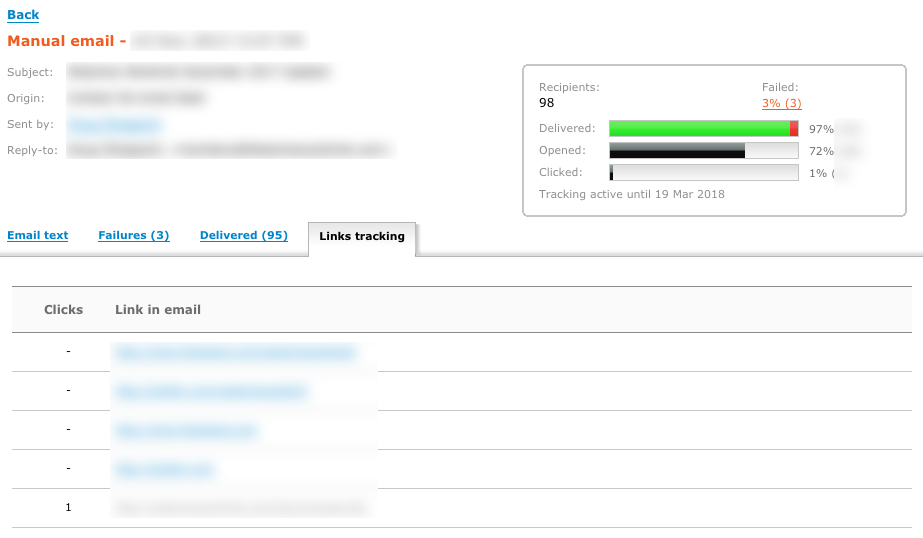Wild Apricot often comes up when you google search for all-in-one membership systems, especially in the context of non-profit of charity type organizations, but did you know it’s actually not your best choice in this day and age? Wild Apricot may have been one of the earlier systems in this space, but the reality is that they haven’t been able to keep up with the demands of modern organizations, nor have they kept up with the demands of modern web systems (website CMS, newsletter, store, etc.).
For many years, a volunteer organization I’m a part of (and also the “IT Guy” for) has used the Wild Apricot platform to run our website and membership. Prior to my time, this was seen as a quick and easy way to have our website, membership, and mailing list handled as an all-in-one solution and was easy enough that those before me (less technically minded individuals) could setup and run it. It was the system most others in our market were using, so they went with it. I get it.
Here are my main beefs with Wild Apricot as a system in 2018:
Contacts Based Billing Approach
This is the biggest drawback to Wild Apricot, so I’m going to start here. If you don’t read the rest of this post, at least read this.
Wild Apricot doesn’t bill you a flat rate, nor do they bill you based on what platform features you want to use, they bill you based on how many contacts your organization has. The important thing to note here is that a contact does not equal a paying member necessarily! Contacts can become members, yes, but a contact may also just be someone you’ve added to the system to get your regular mailing list.
Their rates for contact blocks are expensive – a price that has climbed many times in recent years since their acquisition, but also a price that has climbed while returning very little to us as paying customers. Wild Apricot hasn’t modernized this system one bit despite the many price hikes – they’ve added some small features here and there, and tried to really hype up some new features they added that most systems have had for a decade or more, but we really aren’t getting more for our money yet. I digress.
For only 100 contacts, you’ll be paying the base rate of $40USD per month. OUCH. This is extremely expensive for so few people. I’d imagine most non-profit or membership groups will easily have more than a measly 100 people in their contact or membership books. Prices don’t quite double for each contact tier you go up. Our organization was about to enter into the 500 contacts tier at $90USD/month before we pulled the plug on Wild Apricot. As a small membership-funded organization, this tier would have cost us $1080USD/year. About 20% of our contact list is active paying members, the remainder are leads who we need to convert into paying members by hopefully sending enough interesting and relevant content in our newsletters to do so! Ultimately: all the revenue from our membership base would have 100% gone into paying our Wild Apricot bill every year.

Wild Apricot ensures that as your non-profit, charity, or membership-based organization continues to grow and thrive, that they will continue to receive more and more of a cut of your profits to pay their bill which will increase proportionally with the success of your organization.
In an upcoming blog post, I will share details of our new setup that allows us unlimited members and contacts, has much more functionality than Wild Apricot, and comes in at about $250 or so flat-rate per year. Starting to see why we made the switch?
User Interface
When you login to the admin panel of Wild Apricot, you’re greeted with a user interface reminiscent of, well, the early web systems I started using 15 years ago in my career. It simply hasn’t changed or modernized at all in that time. It’s hideous, and from a UX perspective, it’s not logical in many places either. Adding onto that, it isn’t even mobile friendly in 2018!

The homepage of Wild Apricot doesn’t display what I want to know as the admin of a membership-based organization. I can’t customize this dashboard (why? it’s 2018, I should be able to customize my web system’s landing dashboard) to even get what I want – I have to go hunting. The more I hunt, the more I realize the analytics of this platform suck – there’s hardly any useful analytics at all beyond some basic financial reporting.
Wild Apricot has a pretty dated attempt as a WSYWIG editor for your website pages and mailing list. There’s a lot of great open source WSYWIG options that they could bolt into the system that have been around for half a decade or more at this point, but for some reason they’re still insistent on continuing to develop and maintain their own. They should make the system feel more on par with popular web systems that everyone knows – take an example from the handbook of WordPress or Joomla for how to make great CMS user interfaces!
Email is often a very important feature for membership based groups, charities, and non-profits. These groups will often have supporters from far and wide, and being able to connect with them via relevant email newsletters is pivotal in keeping their members engaged, renewing, and often times new memberships being sold as well.
This is the next biggest area where Wild Apricot falls short. It’s extremely difficult to get a modern looking and feeling email designed and sent in this platform. Their WSYWIG editor is again what contributes quite largely to this problem, but once again it also feels like they haven’t looked at any competing mail systems, like MailChimp for example, to see how the big players are doing this and to try and emulate what the users these days want. Our marketing guy found the email system in Wild Apricot so frustrating to use that he walked away from it completely and would send me his content so I could fight to get it looking decent in Wild Apricot and send it out on his behalf for each newsletter.
Although Wild Apricot does have some email analytic tracking, again, the user interface falls short in making this easy to find, or displayed in a “pretty” dashboard type of fashion. It’s just some basic number puke on the screen for the most part.

Others
There’s a lot of other functionality in Wild Apricot too. We either didn’t use it, so I can’t comment on it, or it worked sufficiently enough to not raise too many complaints.
Unethical Social Media Practises
I’ve always followed and been fairly engaged with other members on the Wild Apricot Facebook page – up until I was banned one day. Other Wild Apricot users will often start all sorts of insightful conversations in the post comments; sometimes about Wild Apricot, sometimes not. A group of people was talking about alternatives to Wild Apricot one day because Wild Apricot, as it stands, was not in their budget range. I explained what I was doing for our new membership site and the pros and cons of this approach, and 24 hours later my post was deleted, and I was banned from ever commenting on the Wild Apricot Facebook page ever again. All other replies about non-Wild Apricot systems were also gone (should I assume those users were banned too?).
Taking away free speech and the ability to even mention a competitor shows that Wild Apricot is feeling like they are in a very insecure or volatile position these days. There are many ways to handle talk of your competition, but silencing and removing those users from ever interacting with you again, especially if they are your paying customers still, is the worst business approach you can take. Speculation: are a lot of people starting to realize there are better options out there, leaving Wild Apricot, and leading to the price increases everyone else has to deal with so they can keep afloat?
To Sum Things Up
As someone who works in the world of web systems for the last two decades, you can clearly tell how much it irks me to see a company like Wild Apricot have a system that’s aimed at non-profits, charities, and membership-based groups or clubs, and to take advantage of them so much with absolutely ridiculous pricing and such incredibly outdated features. Wild Apricot continues to raise prices all while delivering no more value or features to their customers – they simply continue to reap more profit as your group continues to grow and get more successful.
Wild Apricot has gone about pricing this system all wrong ways and has taken the wrong approach to the market they are in. In my opinion, they need to immediately drop the “pay per contact” approach – the industries they are targeting often use these important membership fees to sustain themselves and cover lots of important costs – so stop siphoning off more and more as their membership grow, that money should be helping the organization, not Wild Apricot. Instead, break your system into components and sell it with per-component pricing (i.e. if I don’t want a store feature, then don’t make me pay a price that includes a store feature – let me add it on later for a fixed price if I need it). Wild Apricot doesn’t have increased operating rates on their end based on how many contacts you have – they use that price model purely to profit from your success. They could offer you unlimited contacts for, if anything, pennies more operating costs on their side – but they chose not to.
If Wild Apricot modernized their system and brought it into 2018 from the early 2000’s, and dropped the pay-per-contact pricing model for a modular system pricing model, the system could have some success. In addition to that, they need to halt the approach they take on their social media of silencing and banning anyone who they feel is a detractor to their offering, and instead, offer a platform and proper social media responses that demonstrate the value they bring so they can sell to people who otherwise can’t afford it.
In my next blog post and I’ll show you how, with a little research, we realized we could have a very powerful, modern, system with unlimited contact numbers for about $250/year. I have no affiliation with any of these systems – it simply brings me great excitement to be able to see so much more money back in the hands of our non-profit where we can use that money to grow the group and our mission. Stay tuned!
UPDATE: Second blog post is here!
